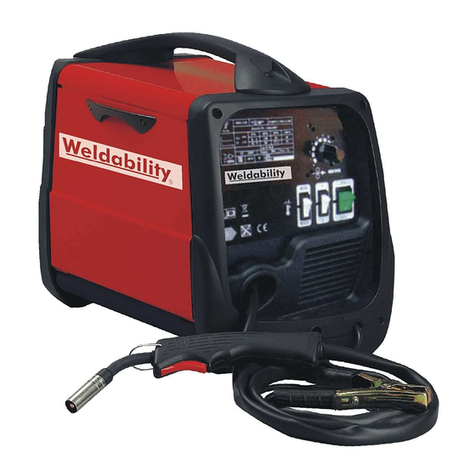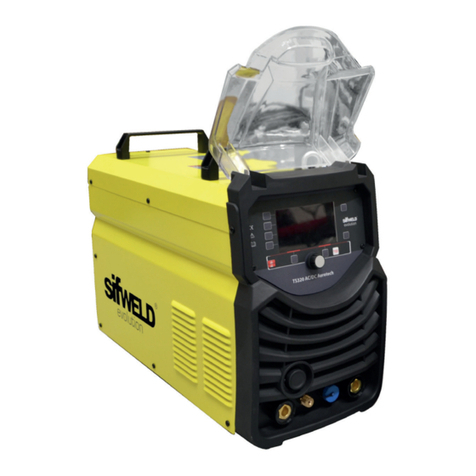Page 2of 13
•Use adequate electrical insulation with regard to the electrode, the work piece and any (accessible)
earthed metal parts in the vicinity.
•This is normally achieved by wearing gloves, shoes, head coverings and clothing designed for this
purpose and by using insulating platforms or mats.
•Always protect your eyes using masks or helmets with special actinic glass.
•Use special fire-resistant protective clothing and do not allow the skin to be exposed to the
ultraviolet and infrared rays produced by the arc; other people in the vicinity of the arc should be
protected by shields of non-reflecting curtains.
•The electromagnetic fields generated by the welding process may interfere with the operation of
electrical and electronic equipment.
•Users of vital electrical or electronic devices (e.g. pace-makers, respirators etc) should consult
a doctor before stopping in the vicinity of areas where this welding machine is used.
•Users of vital electrical or electronic devices should not use the welding machine.
The flow of the welding current generates electromagnetic fields (EMF) around the welding circuit.
Electromagnetic fields can interfere with certain medical equipment (e.g. Pace-makers, respiratory equipment,
metallic prostheses etc.). Adequate protective measures must be adopted for persons with these types of
medical apparatus. For example, they must be forbidden access to the area in which welding machines are in
operation.
This welding machine conforms to technical product standards for exclusive use in an industrial environment
for professional purposes. It does not assure compliance with the basic limits relative to human exposure to
electromagnetic fields in the domestic environment.
The operator must adopt the following procedures in order to reduce exposure to electromagnetic fields:
THE INSTRUCTION MANUAL CAREFULLY.
•Fasten the two welding cables as close together as possible.
•Keep head and trunk as far away as possible from the welding circuit.
•Never wind welding cables around the body.
•Avoid welding with the body within the welding circuit. Keep both cables on the same side of the
body.
•Connect the welding current return cable to the piece being welded, as close as possible to the
welding joint.
•Do not weld while close to, sitting on or leaning against the welding machine (keep at least 50 cm
away from it).
•Do not leave objects in ferromagnetic material in proximity of the welding circuit.
•Minimum distance d= 20 cm (Fig. L).
Class A equipment:
This welding machine conforms to technical product standards for exclusive use in an industrial environment
and for professional purposes. It does not assure compliance with electromagnetic compatibility in domestic
dwellings and in premises directly connected to a low-voltage power supply system feeding buildings for
domestic use.





























